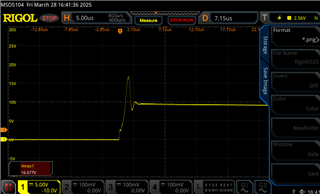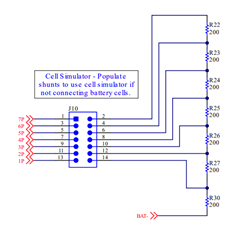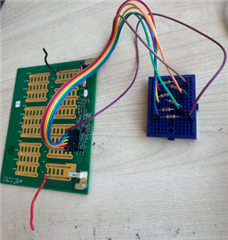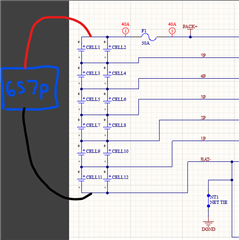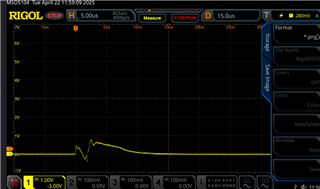Tool/software:
Hello, I am using the BQ76907RGRR in my design. The design is very similar to the dev kit. I have a resistor network set up as well, similar to the dev kit in order to simulate battery cells. I am able to power the board with a power supply hooked up to PACK+ and BAT- at 22V, and I can see the device via I2C. REGOUT is also 3.3V. But when I attach a large battery pack to the setup the IC seems to fail and I can no longer see the device on I2C. The configuration of the battery pack is 6s7p (22.2V). REGOUT is also close to 0V. When I switch back to a power supply, I am still unable to see the device on I2C and REGOUT is still near 0V. Attached are the voltage ramps and inrush current upon battery attach. Is there something that stands out that point to what's damaging the chip? The measurements seem to be under the max ratings in the datasheet. Let me know if there's anything else I can try or test. Thanks!
Schematic:
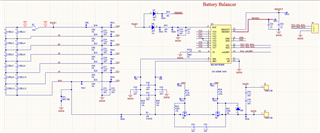
Inrush current. (Used a 10ohm power resistor so inrush current is about 1.74A):
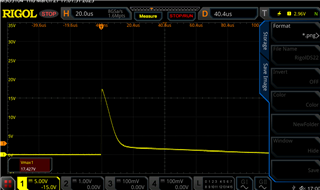
Voltage ramp across DGND and PACK+:
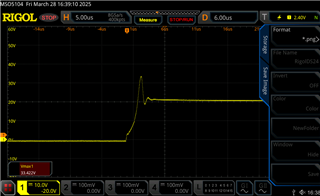
Voltage ramp across DGND and PACK-:
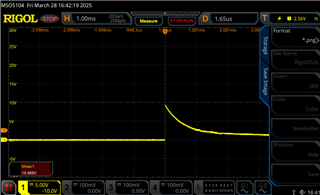
Voltage ramp across DGND and PACK- (Zoomed in):
